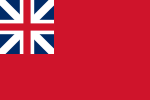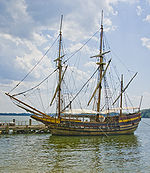St. Mary's College of Maryland

St. Mary's College of Maryland (SMCM) is a public liberal arts college in St. Mary's City, Maryland. Established in 1840, St. Mary's College is an honors college that claims to "offer an experience similar to that of an elite liberal arts college". With about 1,600 enrolled students, the institution offers bachelor's degrees in 21 disciplines, as well as a master's program and certification programs. The college shares much of its campus with Historic St. Mary's City, the site of Maryland's first colony and capital. It is also the site of the fourth colony in British North America. The Historical Archaeology Field School is jointly operated by St. Mary's College of Maryland and Historic St. Mary's City. The campus and the rest of St. Mary's City combined are considered to be one of the premier archaeological sites in the United States.
Excerpt from the Wikipedia article St. Mary's College of Maryland (License: CC BY-SA 3.0, Authors, Images).St. Mary's College of Maryland
Old State House Road, Saint Mary's City
Geographical coordinates (GPS) Address Nearby Places Show on map
Geographical coordinates (GPS)
| Latitude | Longitude |
|---|---|
| N 38.1867 ° | E -76.4309 ° |
Address
Old State House Road
20686 Saint Mary's City
Maryland, United States
Open on Google Maps








